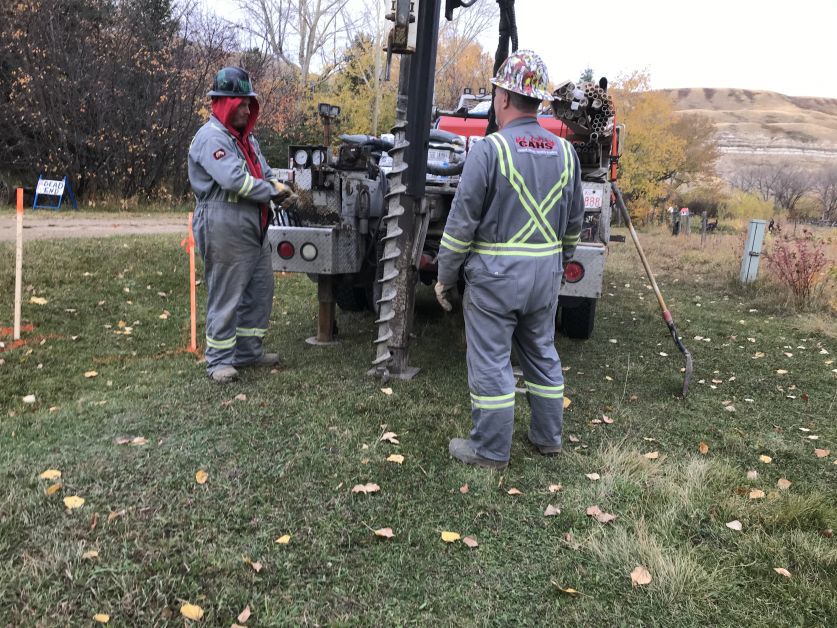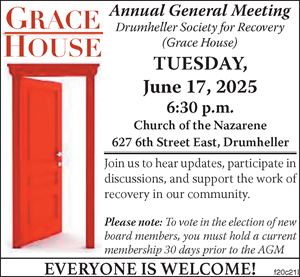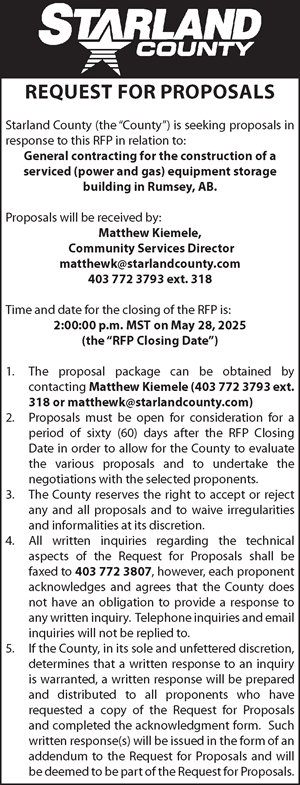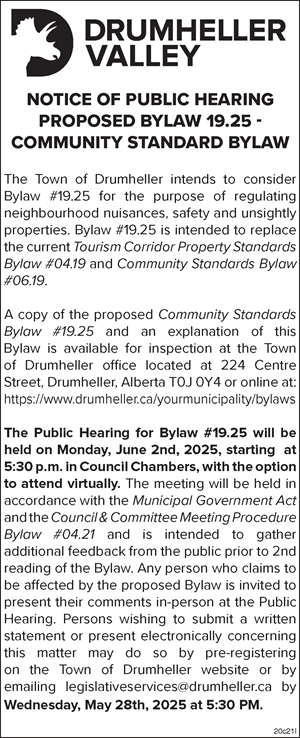Geotechnical engineers will begin drilling boreholes in the Drumheller Valley to help determine possible future berm alignments for ongoing flood mitigation efforts.
Approximately 20 boreholes were drilled on publicly accessible land in fall 2020 to help engineers fill in gaps in historic records, and to provide initial information for proposals.
“When designing dikes and berms, we need to get an idea of the foundation soil condition and soil type-whether it is silt, sand, or clay,” said Mark Brotherton, geotechnical engineer with Red Deer firm Parkland Geotechnical Consulting Ltd.
Brotherton is one of the main consultants on the project, with 40 years experience as a geotechnical engineer, and the company is very familiar with the Red Deer River.
He explained the boreholes will typically be drilled down to bedrock, which can range from only a few metres to 20 metres throughout the Drumheller Valley. The procedure will help provide data on the types of soils throughout the valley and determine whether a dike would be feasible based on whether the soil in the proposed alignment area will support the berm structure.
The data will also help with completing detailed berm designs, such as determining stable side slope angles.
Parkland Geotechnical is not the only company involved in this phase of the project, with most planning to conduct drilling beginning in March; drilling is anticipated to take place over the next three to four weeks.
Some of the drilling may need to be conducted on privately owned land, and Scott Land and Lease will be in consultation with landowners to arrange for drilling on private properties.
The berm designs will help protect residents from overland flooding. However, Brotherton notes seepage is a topic which often comes up when discussing flood mitigation efforts. While overland flooding can have worse impacts, seepage is still a cause for concern as responsibility falls onto the homeowner. Brotherton notes a good weeping tile system is the “first line of defence” against seepage in the basements of houses.
“The purpose of dikes is to stop the overland flow,” he said. “We know, for the short flood period, the water rises on the river side of the dikes. If the berms are on permeable material (such as gravel or sand) it will likely have an impact on seepage in the protected area behind the dike.”
He adds building berms on less permeable soils, such as clays, silt clay, and bedrock can reduce the impact of floods on the local groundwater table and seepage.






















